8 Must-Have Japanese Maple Varieties for Gorgeous Foliage This Fall
If you want stunning fall foliage and year-round interest, these 8 types of Japanese maples are sure to make your garden shine.
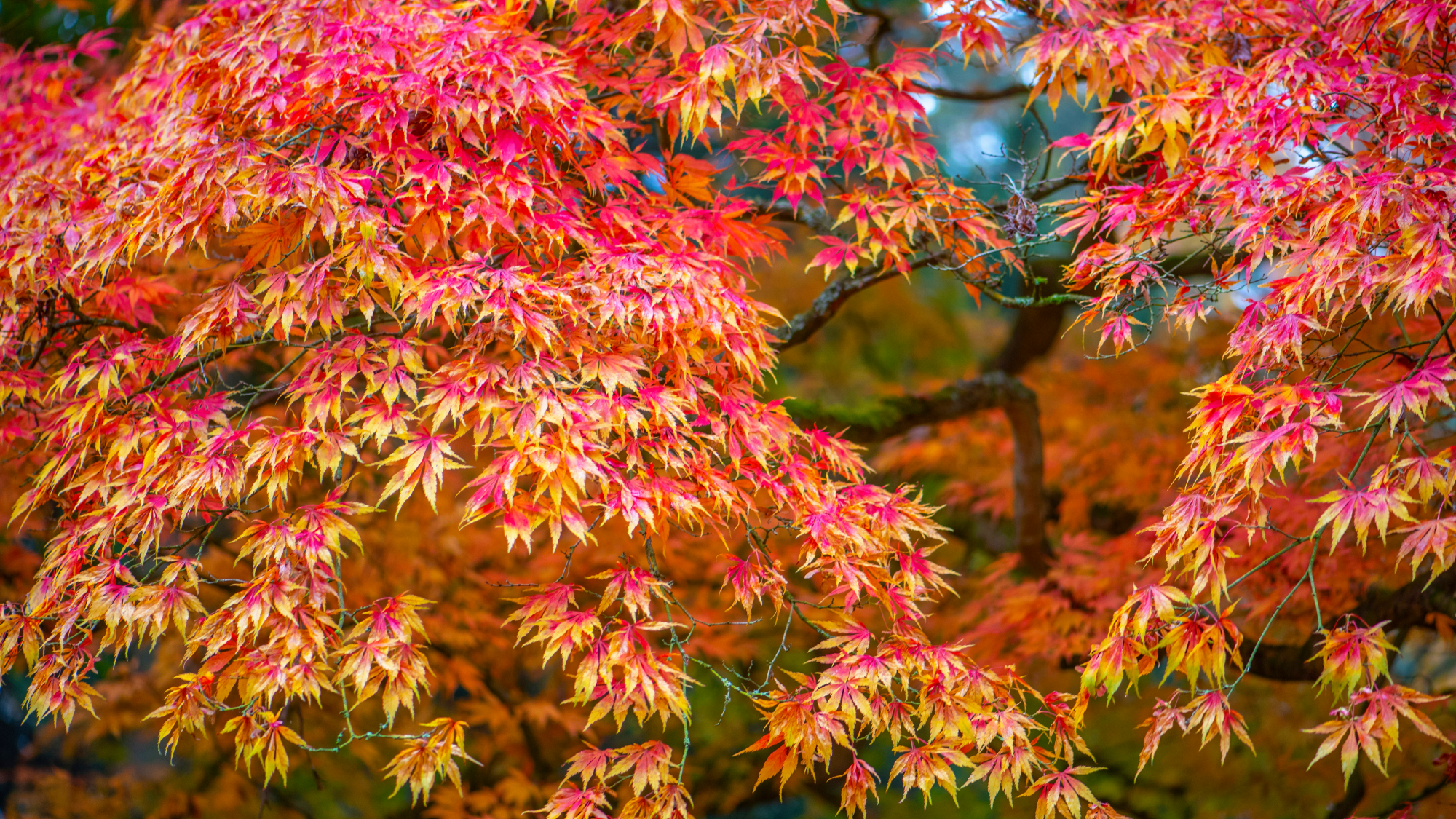

When my sister and I were in grade school, we used to watch the Miss America pageant on television. In our childish ignorance, we would label some of these gorgeous ladies “pretty,” some “okay,” and some “not pretty at all.”
This comes to mind when ranking the best varieties of Japanese maple (Acer palmatum), since all of them are so beautiful. In fact, I’ve never met one of these small, ornamental maples that didn’t enchant me with their delicate leaves and fiery autumn display.
In my opinion, growing Japanese maples in your landscape is always a good idea. But if you want to create a truly spectacular autumn landscape, here are my top recommendations for the best Japanese maples. These picks all feature breathtaking fall foliage and there's a tree for almost every different growing situation.
Best Japanese Maples for Fall Color
There are so many beautiful varieties and cultivars of Japanese maples available. No matter whether your space is large or small, sunny or shady, hot or cold, you can find a tree with colorful fall foliage and year-long interest. Here are some of my favorites for different landscaping needs.
1. Best for Cold Zones: ‘Beni Kawa’
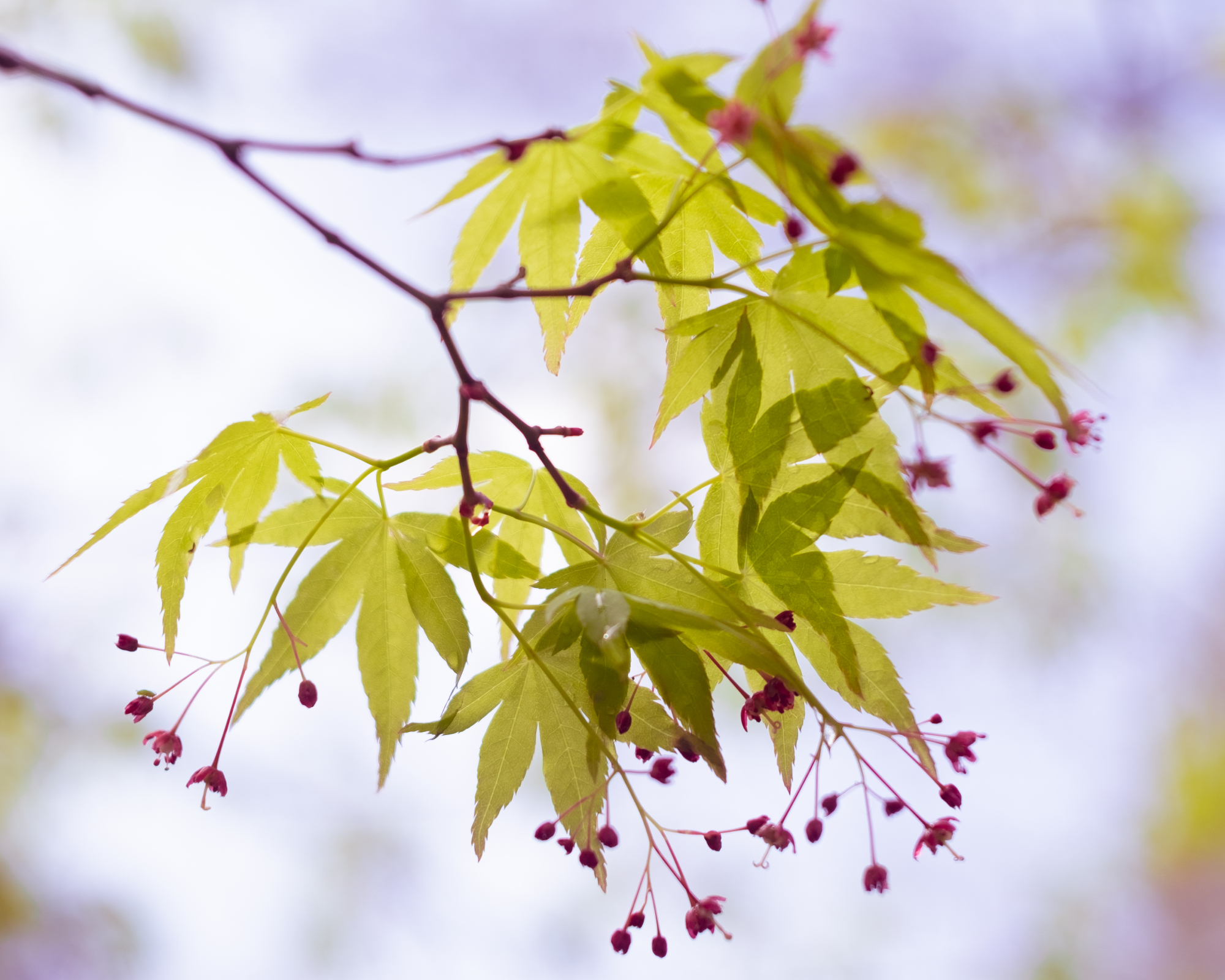
- Botanical name: Acer palmatum ‘Beni Kawa’
- Height and spread: 15 feet (5 m) tall and wide
- Zones: USDA 5-9
- Sun exposure: Full sun, or part shade in hot locations
Generally, Japanese maples are said to thrive in USDA growing zones 5-9, which may seem to leave those who live in USDA zone 4 out of luck. But that’s not necessarily true. Anyone seeking a Japanese maple for a colder climate should try the cultivar ‘Beni Kawa’.
This is a lovely, upright tree with a vas-like shape and bright red bark that makes it one of the best trees for four-season interest. The leaves start out dark green, then change in fall to gold and red. It is very cold tolerant and can thrive all the way down to zone 4
Buy a Beni Kawa Japanese maple tree on Amazon.
Sign up for the Gardening Know How newsletter today and receive a free copy of our e-book "How to Grow Delicious Tomatoes".
2. Best for Hot Zones: ‘Seiryu’
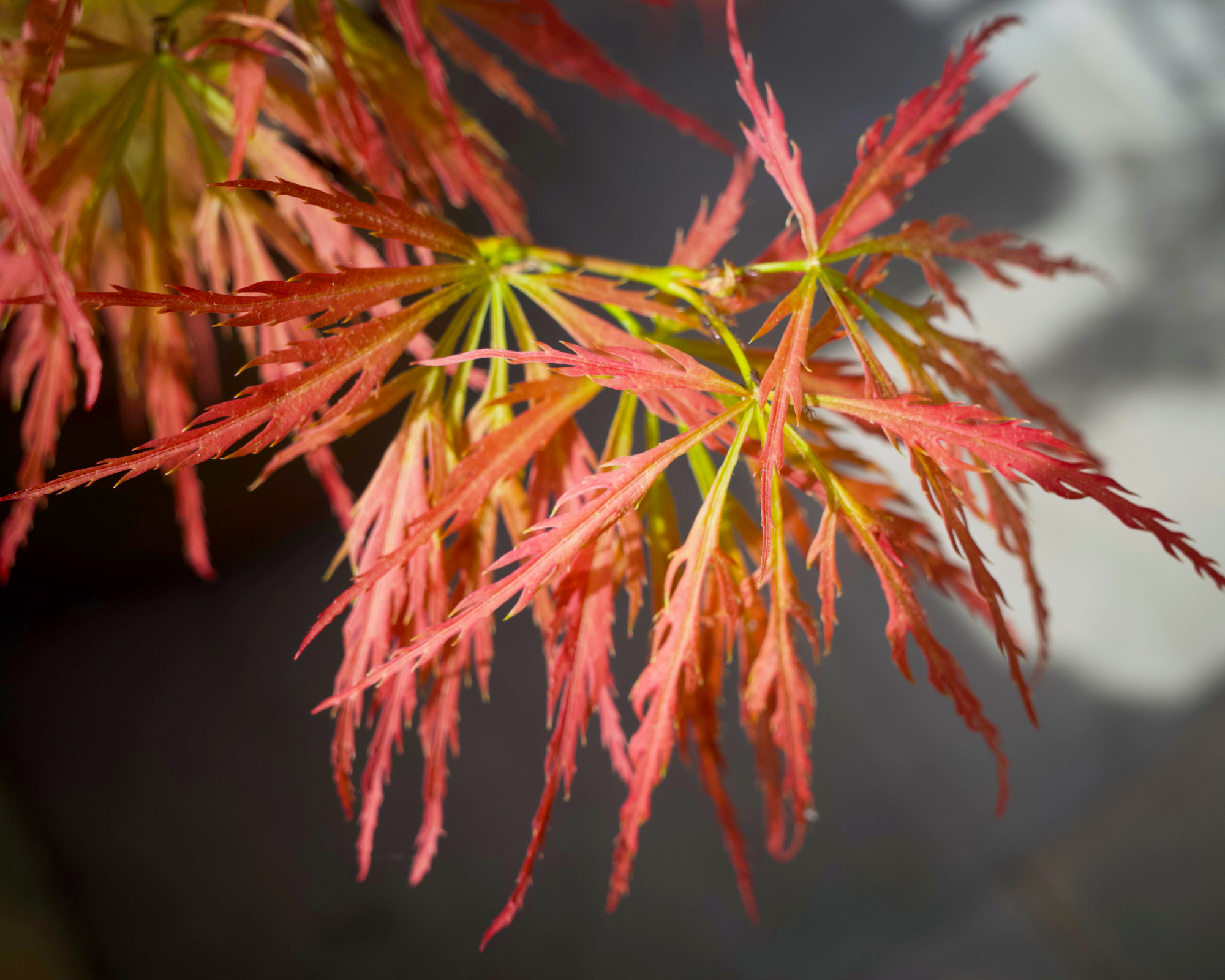
- Botanical name: Acer palmatum ‘Seiryu’
- Height and spread: 15 feet (5 m) tall, 12 feet (4 m) wide
- Zones: USDA 5-9
- Sun exposure: Full sun
If you are looking for a Japanese maple cultivar that supports the heat better than its fellows, consider ‘Seiryu.’ Most dissected, or lace-leaf, Japanese maples are weeping varieties so this may be the sole upright cultivar with those sought-after lacy leaves. They are red-tipped in spring, green in summer, and bronze-gold in fall.
Get your Seiryu Japanese maple from Home Depot today.
3. Best for Small Gardens: ‘Filigree’
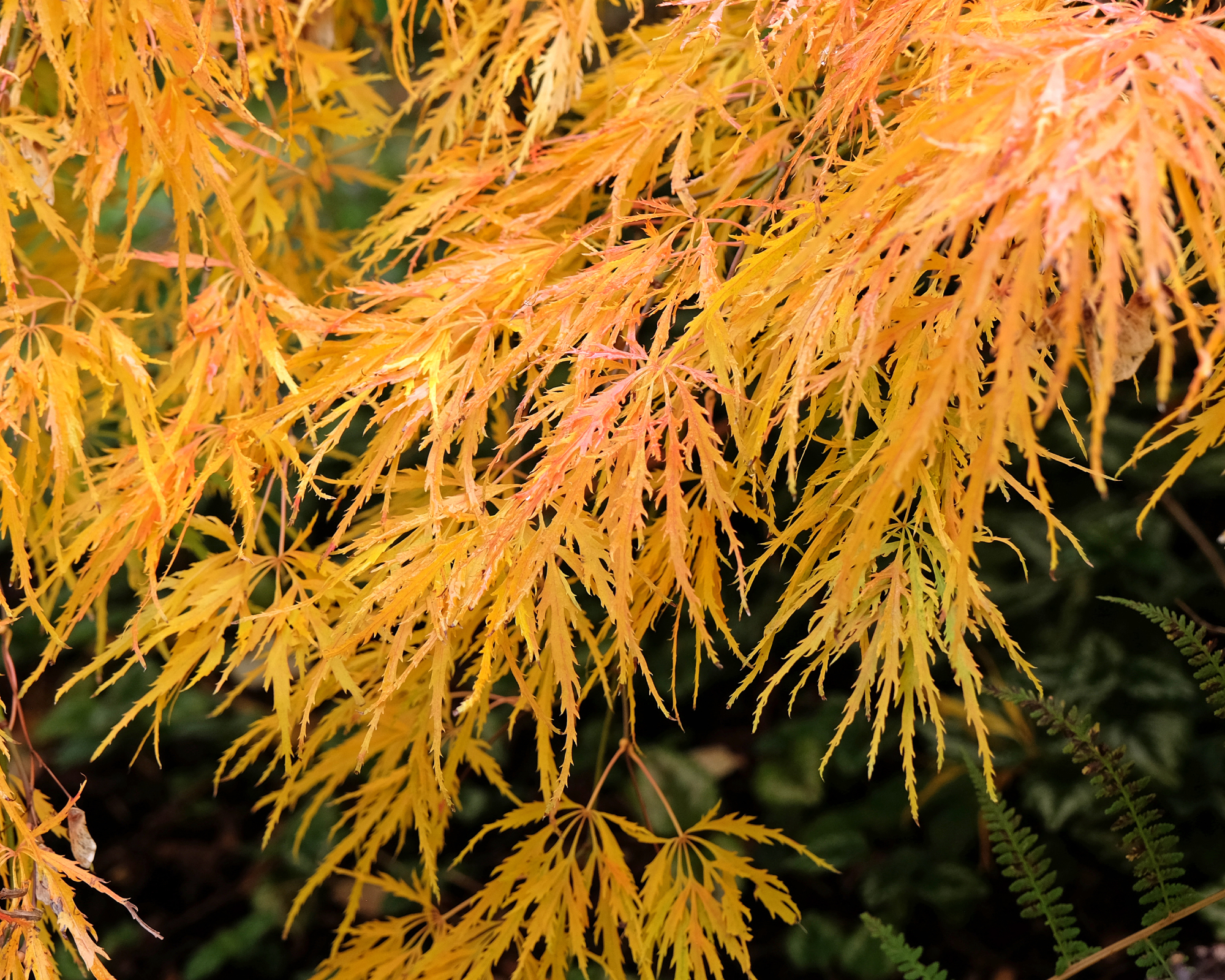
- Botanical name: Acer palmatum var. dissectum ‘Filigree’
- Height and spread: 3-6 feet (1-2 m) tall and wide
- Zones: USDA 5-8
- Sun exposure: Full sun to part shade
Here’s another lace-leaf variety, with showy, dissected leaves. But this one is a mounding rather than upright variety, with branches that cascade down, sometimes to the ground. It's a great small tree for the front yard since it won’t get much taller than you are, so it won't dominate the landscape. The green leaves turn gold in fall or the 'Red Filigree' cultivars turn a deep, almost purple red.
You can find Red Filigree Japanese maples for sale on Amazon.
4. Best for Large Landscapes: ‘Osakazuki’
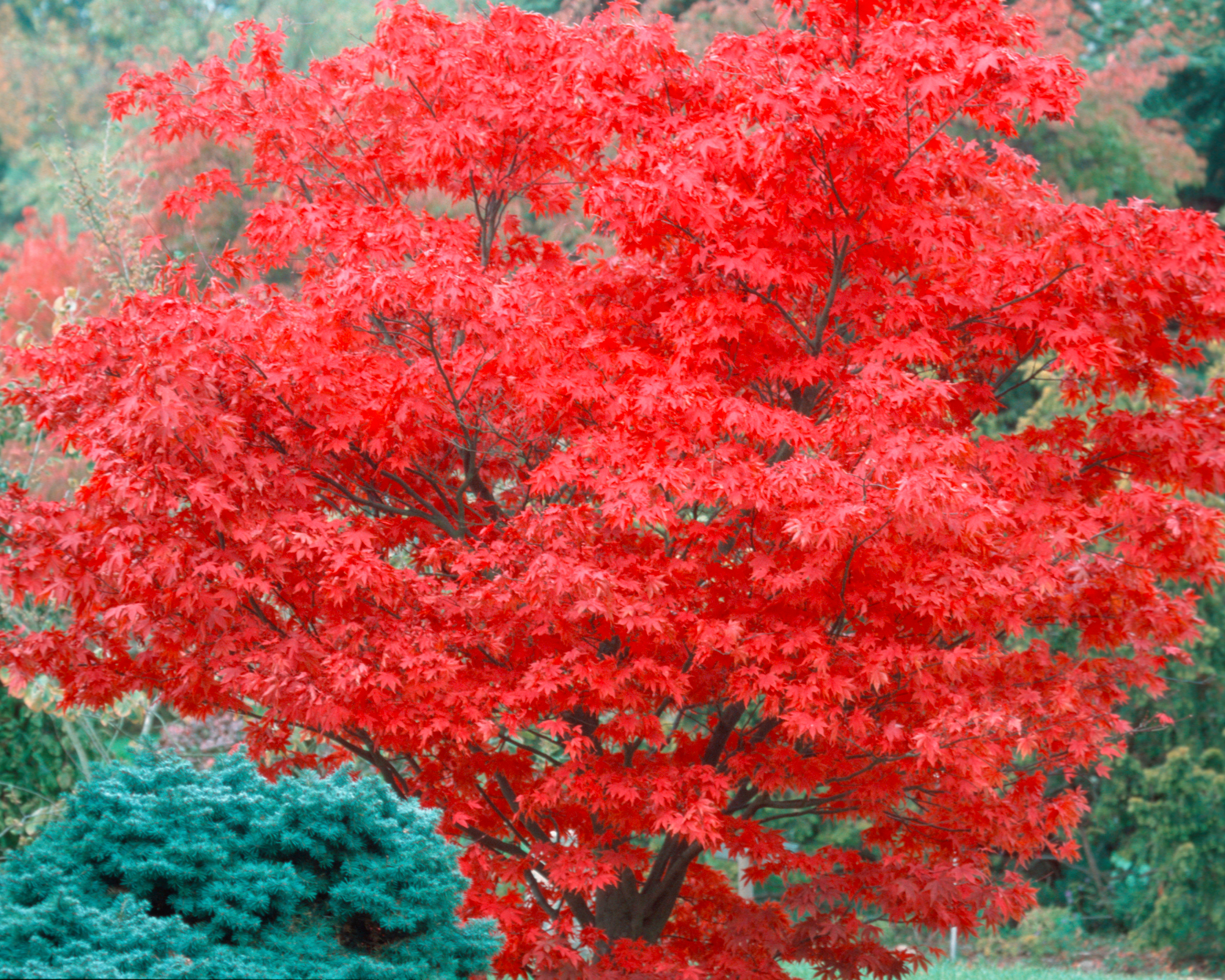
- Botanical name: Acer palmatum 'Osakazuki'
- Height and spread: 25 feet (8m) tall and wide
- Zones: USDA 5-8
- Sun exposure: Dappled or filtered sun
‘Osakazuki’, which stands about 25 feet (8 m) at maturity, is about as tall as a Japanese maple gets. Its graceful branching stems make it an appealing tree in all seasons, even before we consider the foliage show.
Choosing the right cultivar, like this stunning option, is the best way to get good fall color on Japanese maples. The deeply lobed leaves appear orange-tinted in spring, mature into bright green, then blaze a vibrant scarlet in fall.
Get gorgeous fall foliage with an Osakazuki Japanese maple from Amazon.
5. Best for Containers: ‘Velvet Viking’
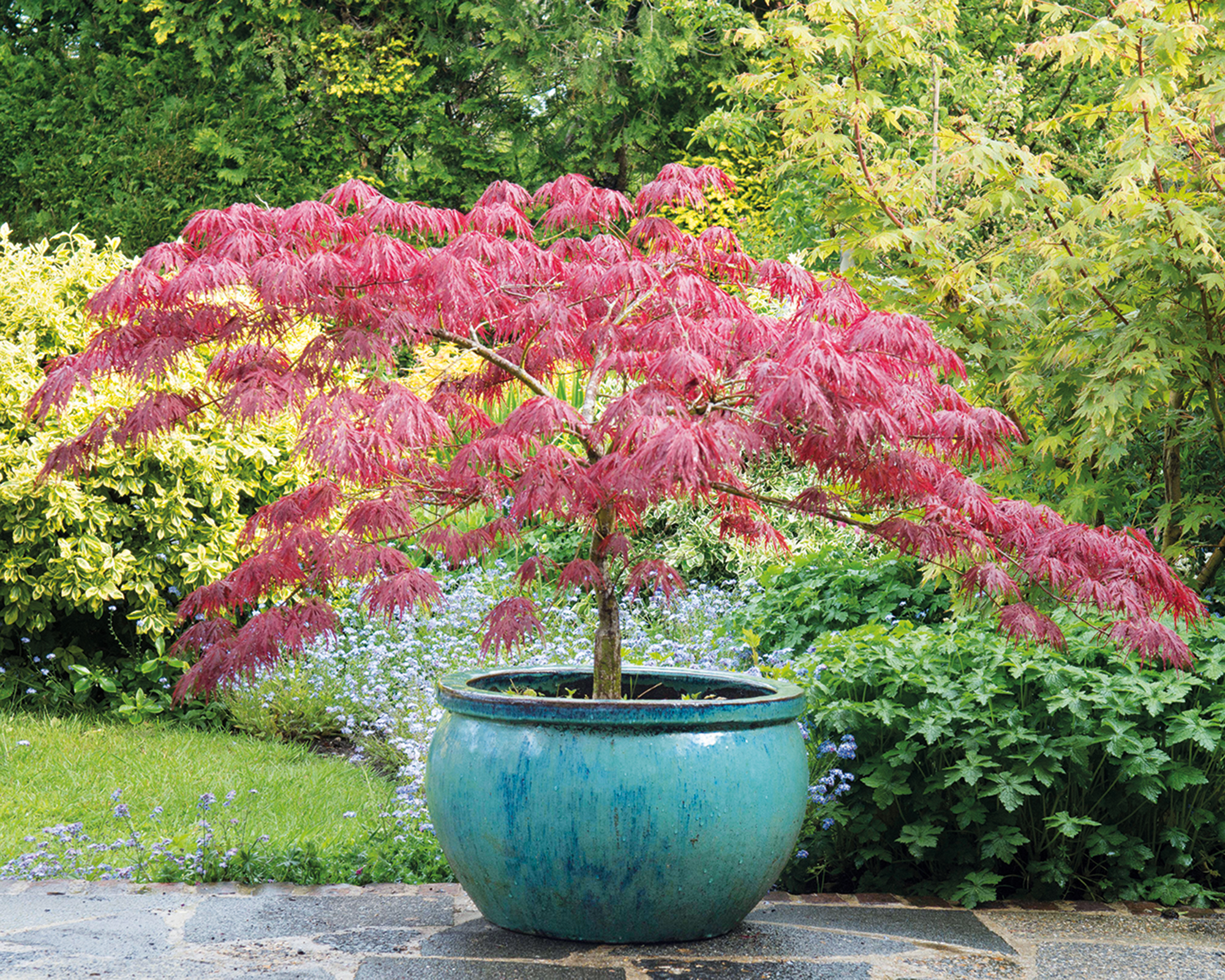
- Botanical name: Acer palmatum var. dissectum 'Monfrick'
- Height and spread: 3 feet (1 m) tall, 6 feet (2 m) wide
- Zones: USDA 4-9
- Sun exposure: Filtered to full sun
There are many Japanese maples you can grow in containers, but ‘Velvet Viking’ is a personal favorite. It is a dwarf cultivar with a mounded and weeping form. The branches spread gracefully, and are covered with delicate, red leaves from spring to fall, with the red tones turning more vibrant in fall. Despite its lacy leaves and fragile beauty, this cultivar is tough and very cold tolerant.
Find Velvet Viking from Monrovia at a local retailer near you.
6. Best for Sun: 'Bloodgood'
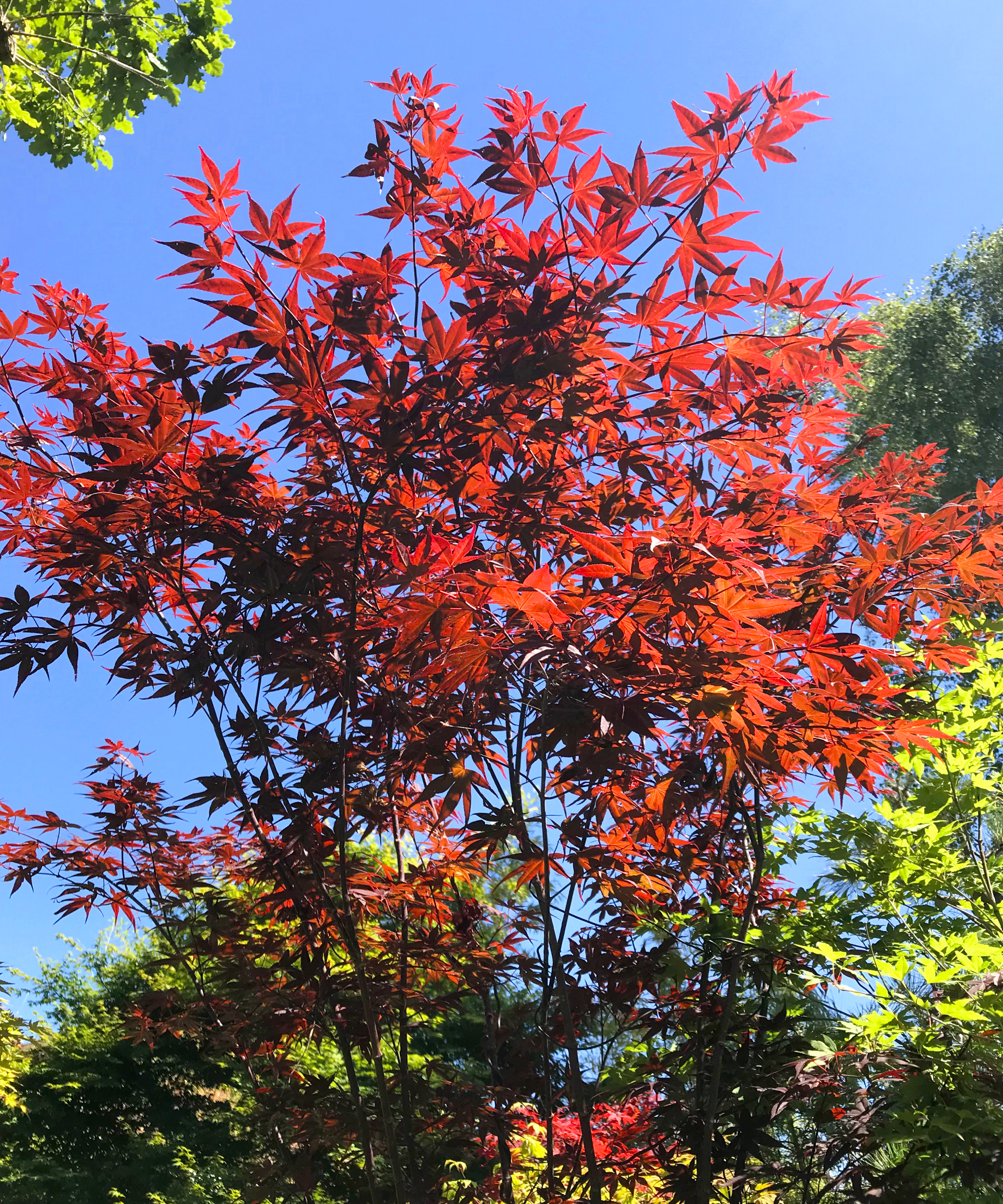
- Botanical name: Acer palmatum atropurpureum 'Bloodgood'
- Height and spread: 20 feet (7 m) tall and wide
- Zones: USDA 5-8
- Sun exposure: Full sun to partial shade
The “atropurpureum” in the botanical name labels this maple as a plant with red-to-maroon leaves—and the name 'Bloodgood' is another clue. So yes, Bloodgood has crimson leaves that shine in fall.
This eternally popular Japanese maple cultivar offers reddish-purple leaves in summer if grown in shade, greener summer leaves in a sunny location. But all Bloodgood trees have red foliage in fall.
Buy Bloodgood Japanese maple trees from Home Depot online.
7. Best for Shade: ‘Orange Dream’
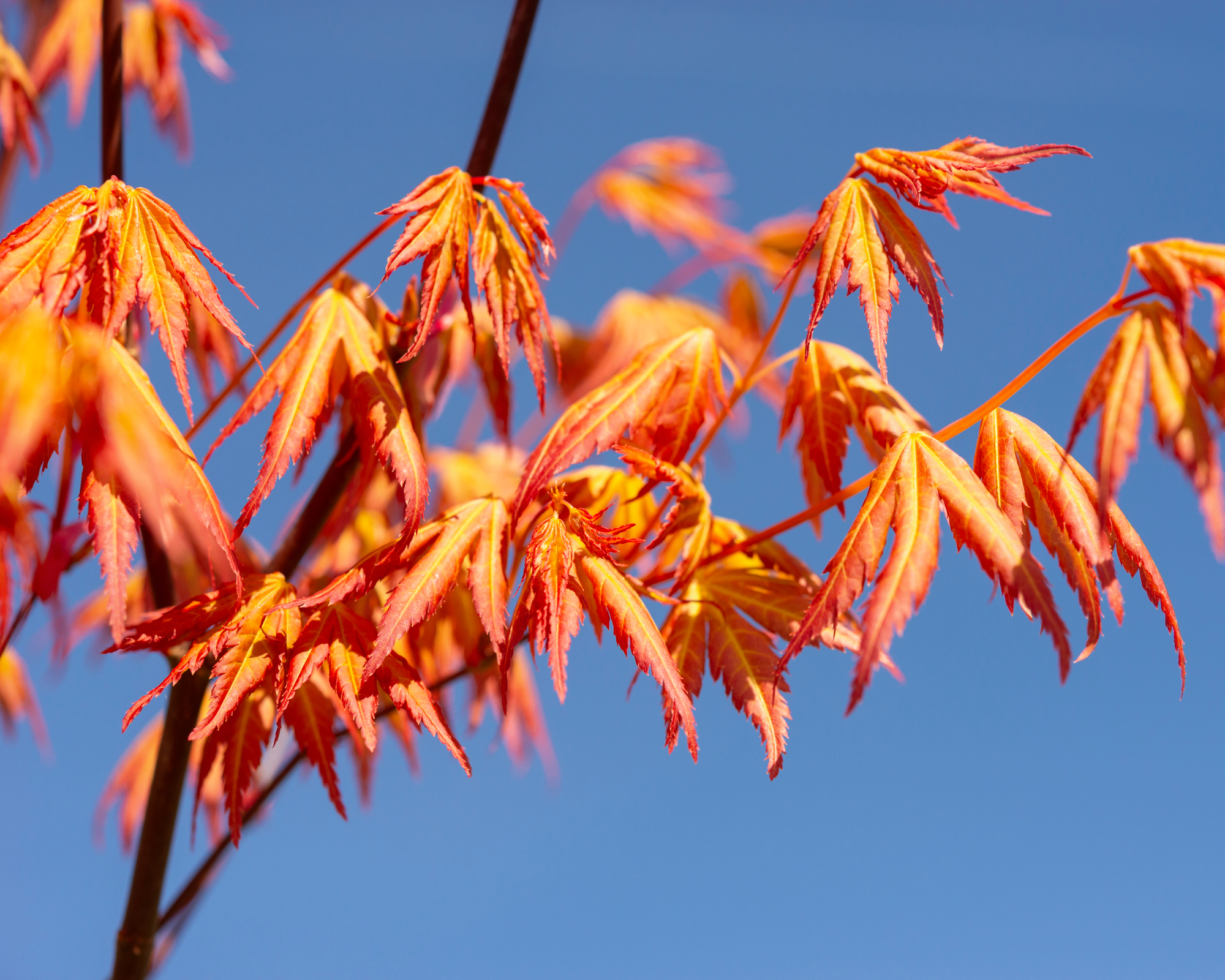
- Botanical name: Acer palmatum ‘Orange Dream’
- Height and spread: 10 feet (3 m) tall, 6 feet (2 m) wide
- Zones: USDA 5-8
- Sun exposure: Full to dappled sun
This stunning Japanese maple is a shrub-size tree that keeps changing leaf-color all during the growing season. The foliage grows in yellow with pink edging, then turns to shades of orange before blazing canary yellow for fall. ‘Orange Dream’ has an upright form and works well in a border or as a container tree on a patio.
Order your Orange Dream Japanese maple from Amazon today.
8. Best for Winter Interest: 'Sango Kaku'
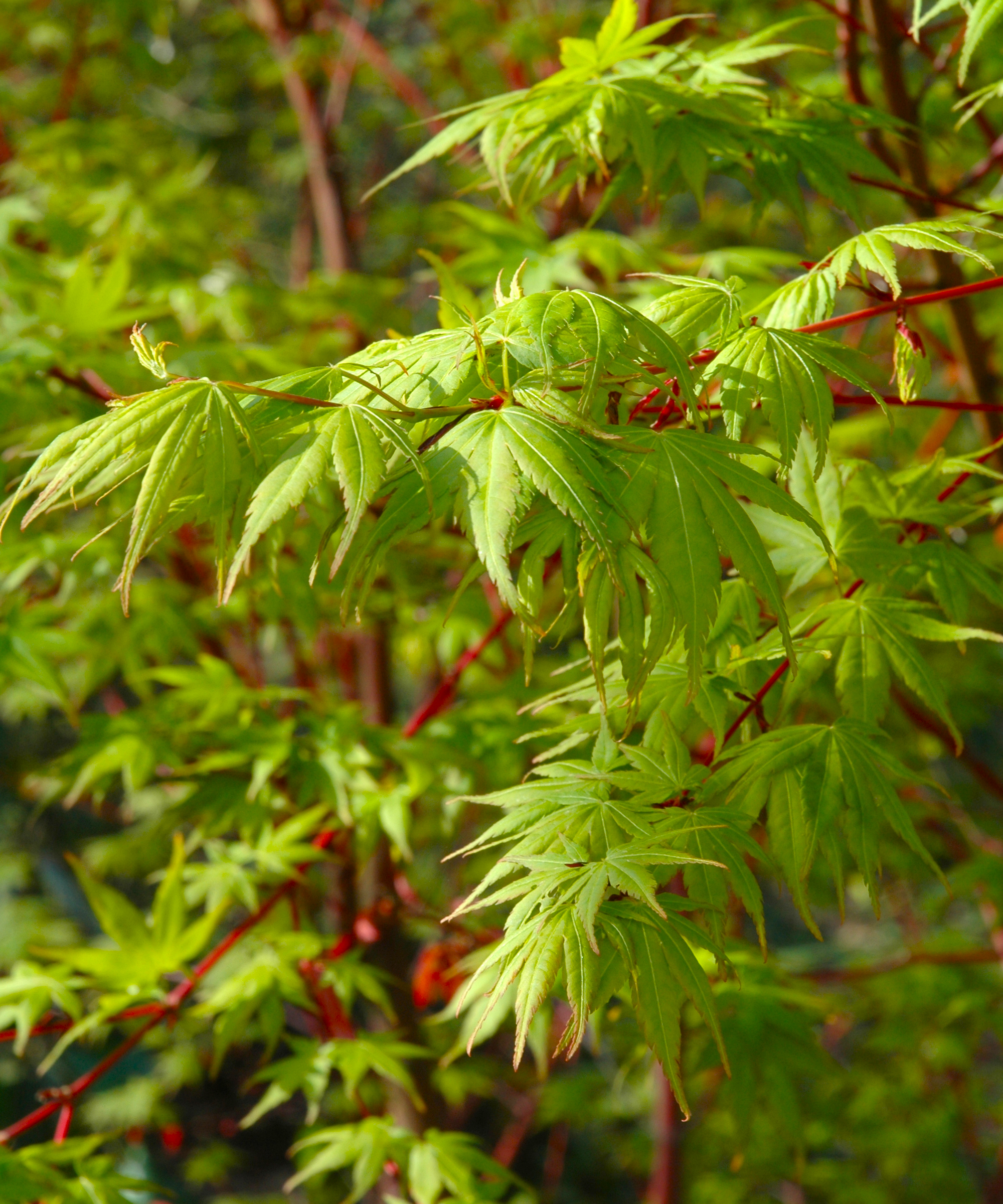
- Botanical name: Acer palmatum 'Sango Kaku'
- Height and spread: 25 feet (8 m) tall, 15 feet (5 m) wide
- Zones: USDA 5-8
- Sun exposure: Full sun to part shade
Bright bark and lovely branch form are the best attributes of a Japanese maple in winter, and 'Sango Kaku' offers both. This tall, graceful cultivar has yellow-green foliage that turns gold in autumn, but it’s the red bark that makes it amazing even after the leaves fall. It's a beautiful tree for winter interest in the garden.
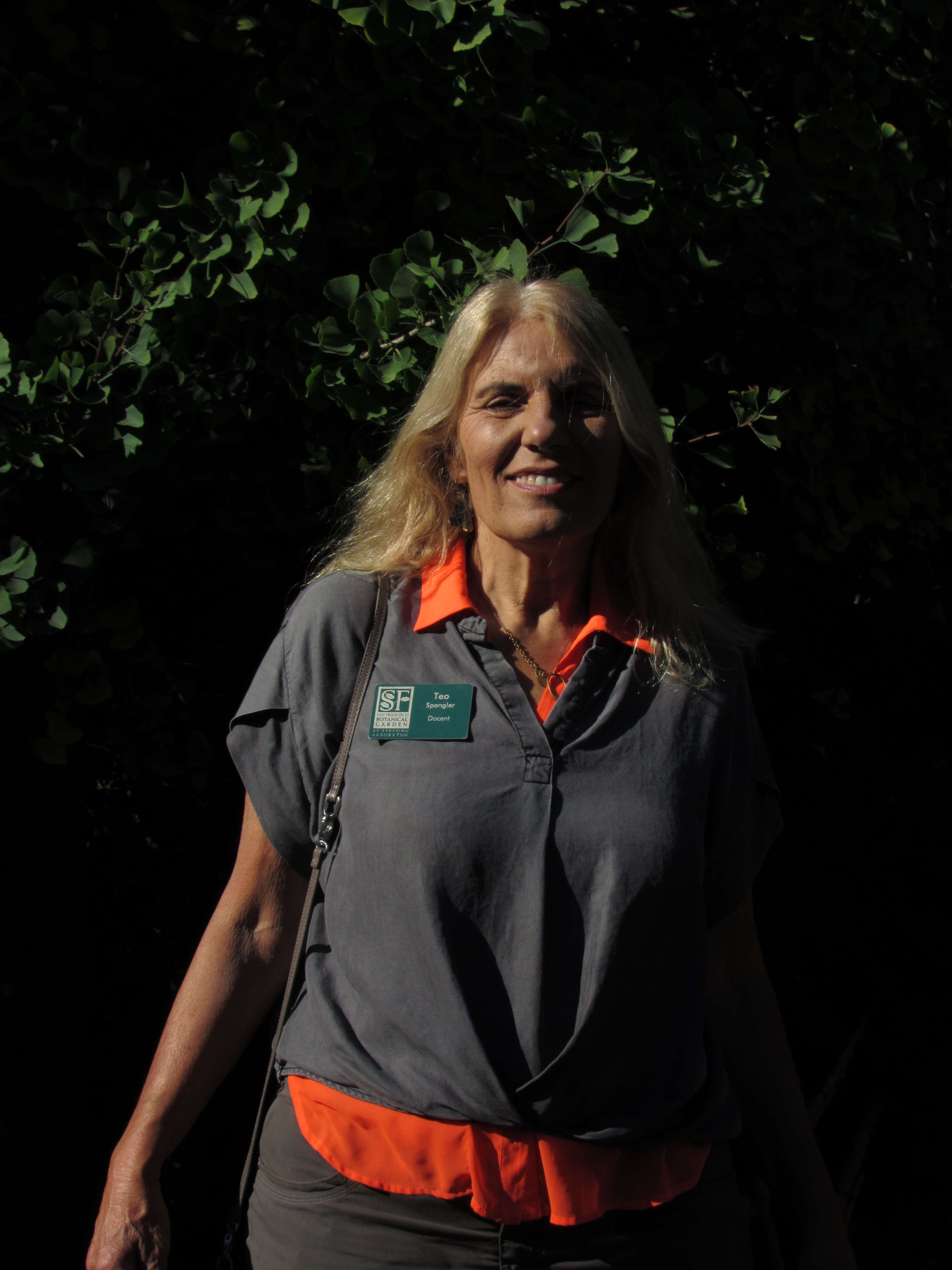
Teo Spengler is a master gardener and a docent at the San Francisco Botanical Garden, where she hosts public tours. She has studied horticulture and written about nature, trees, plants, and gardening for more than two decades, following a career as an attorney and legal writer. Her extended family includes some 30 houseplants and hundreds of outdoor plants, including 250 trees, which are her main passion. Spengler currently splits her life between San Francisco and the French Basque Country, though she was raised in Alaska, giving her experience of gardening in a range of climates.